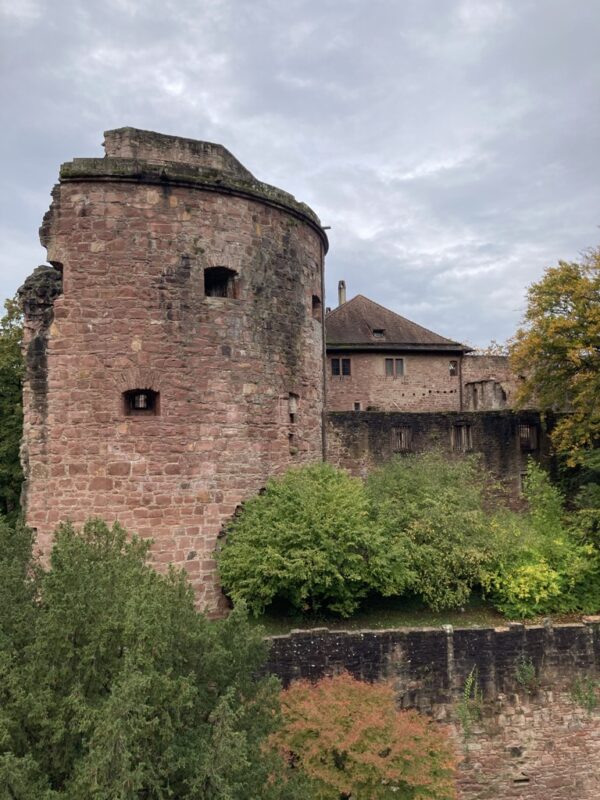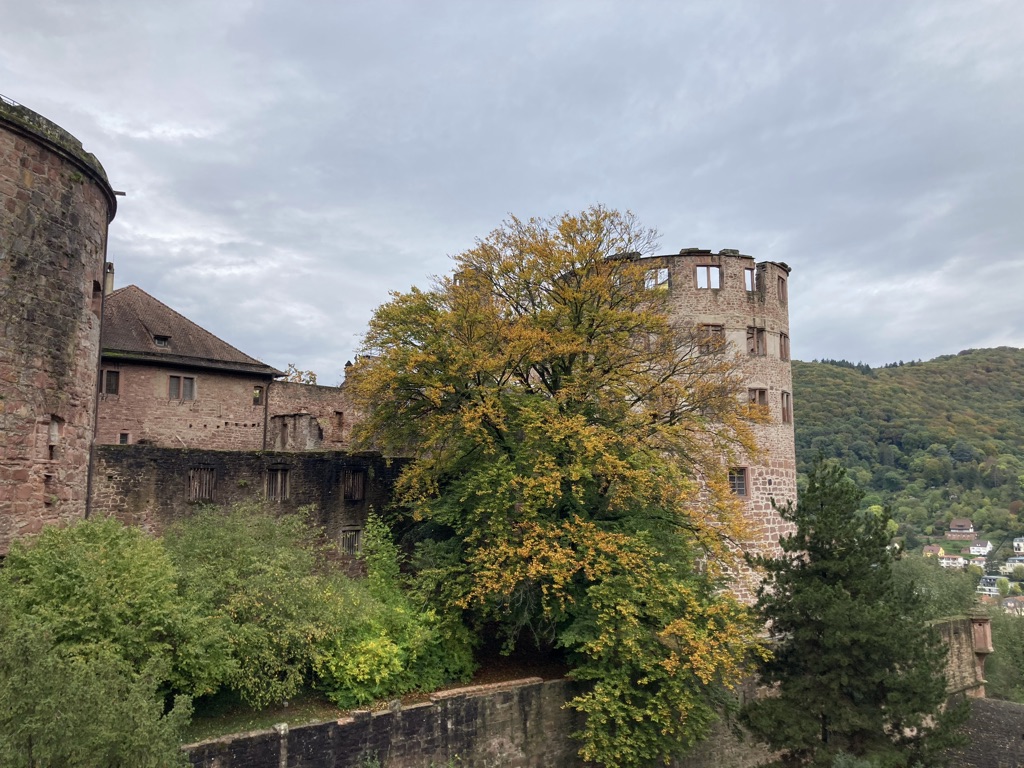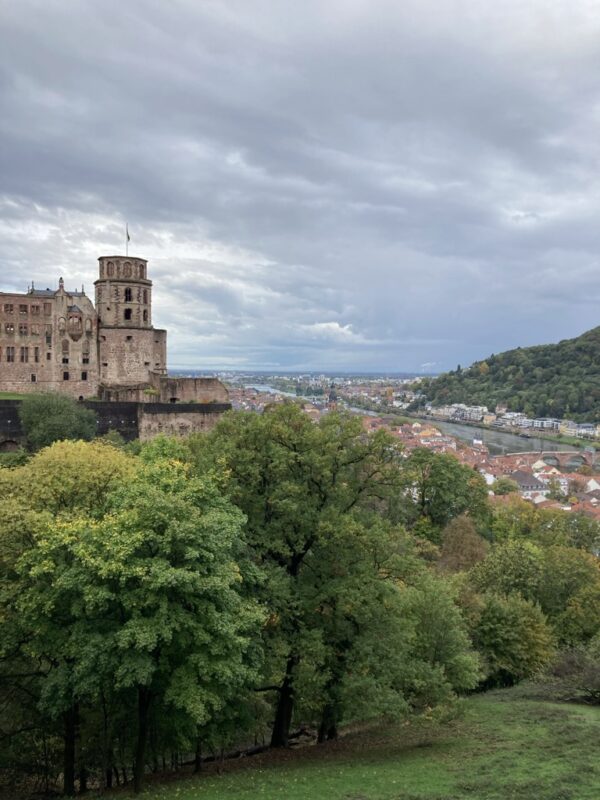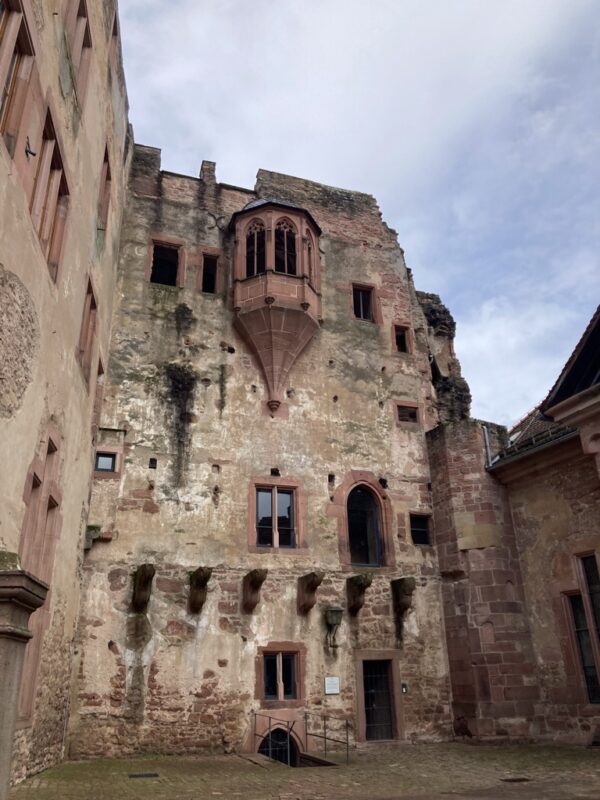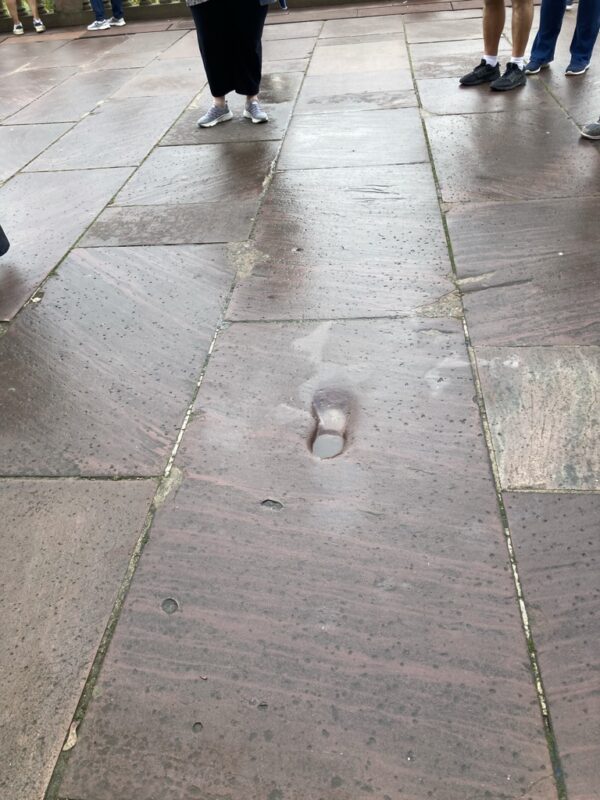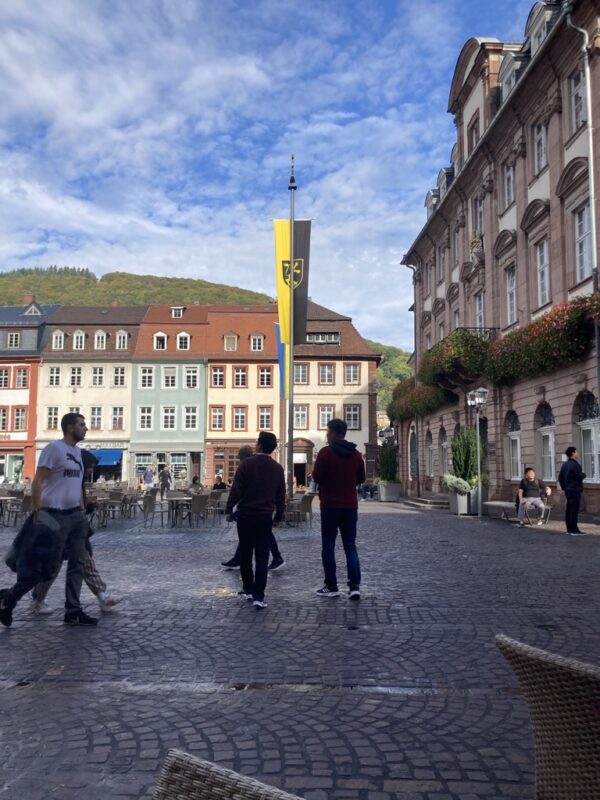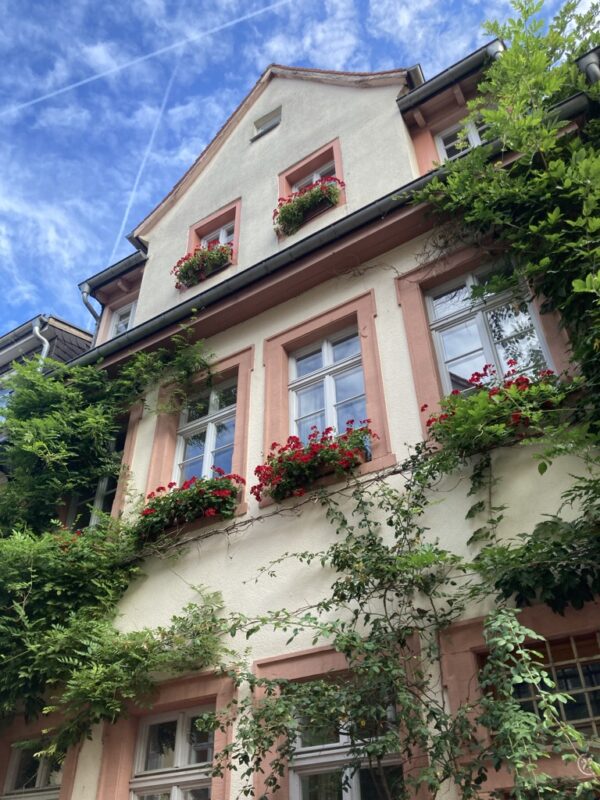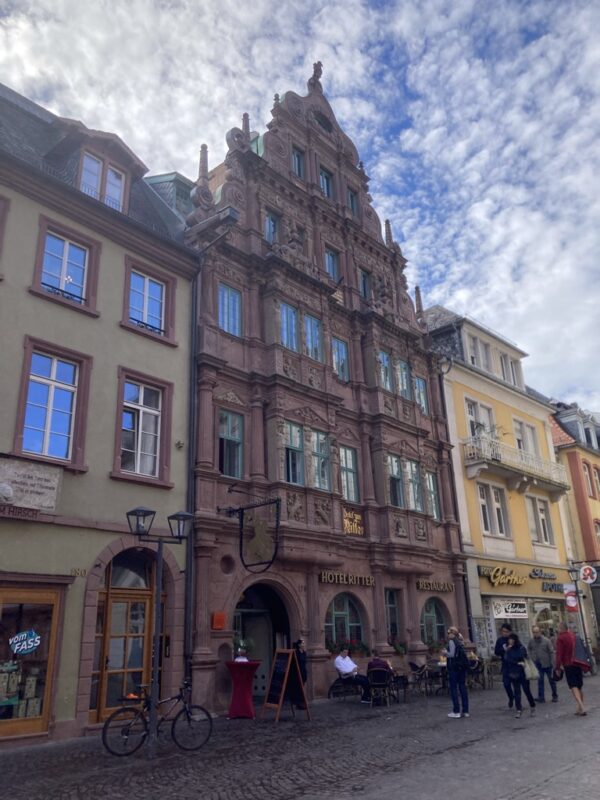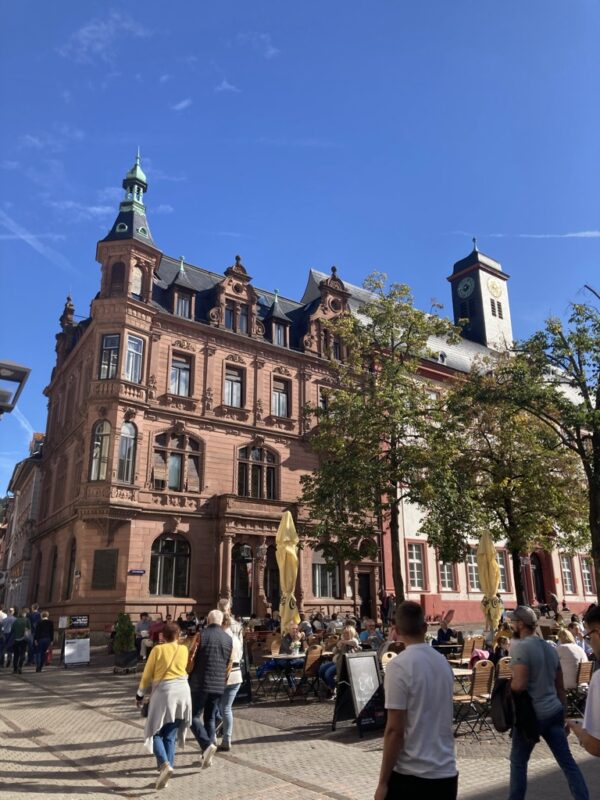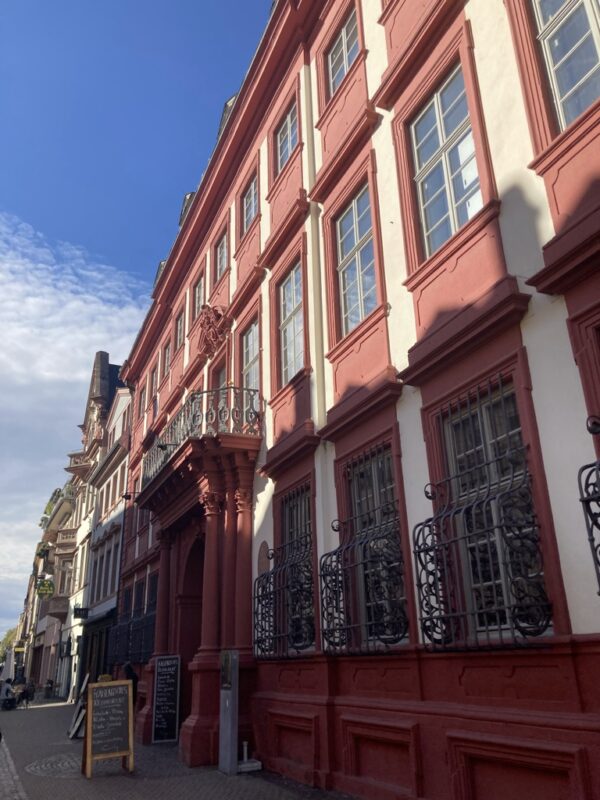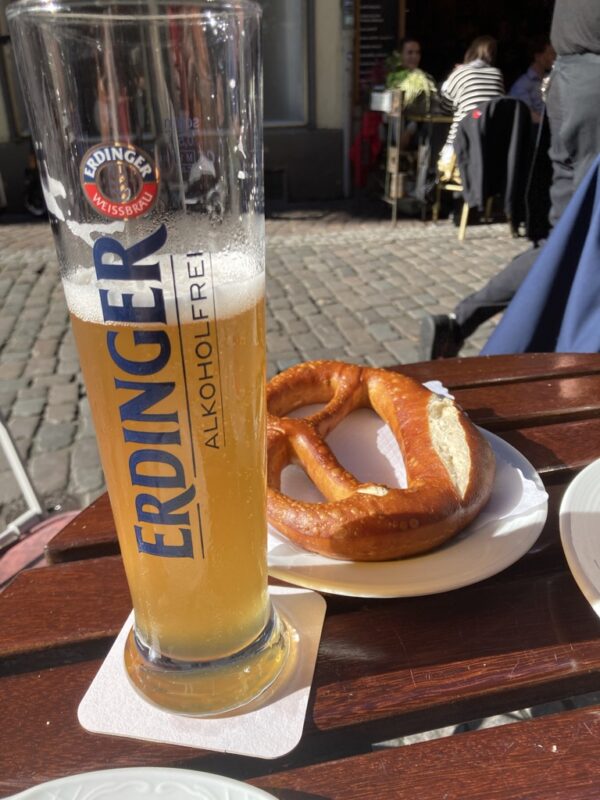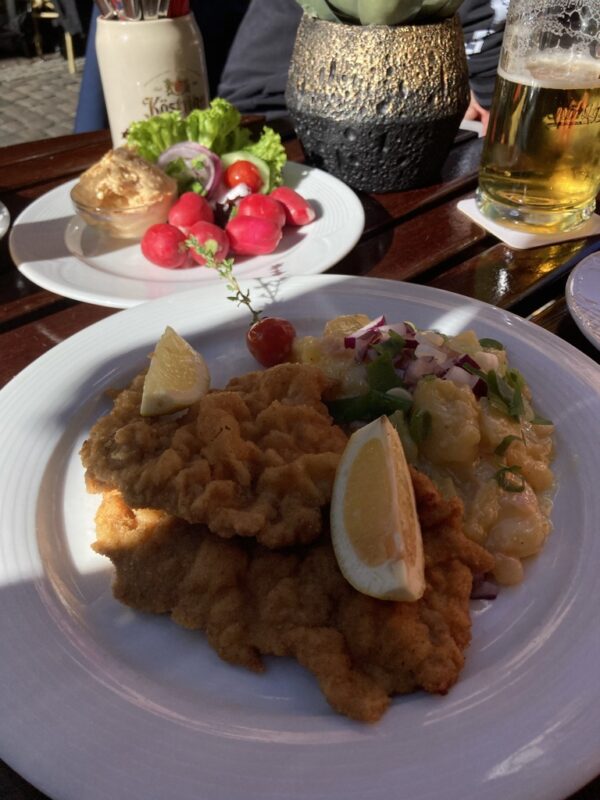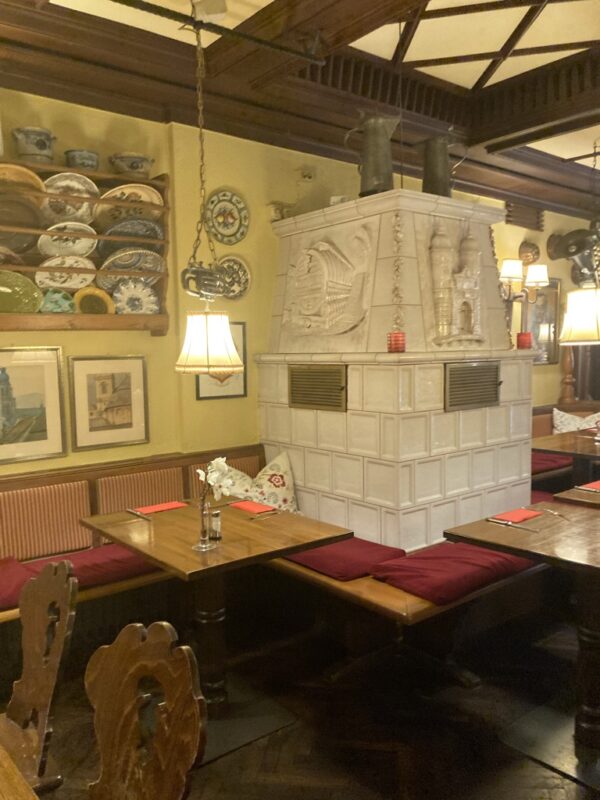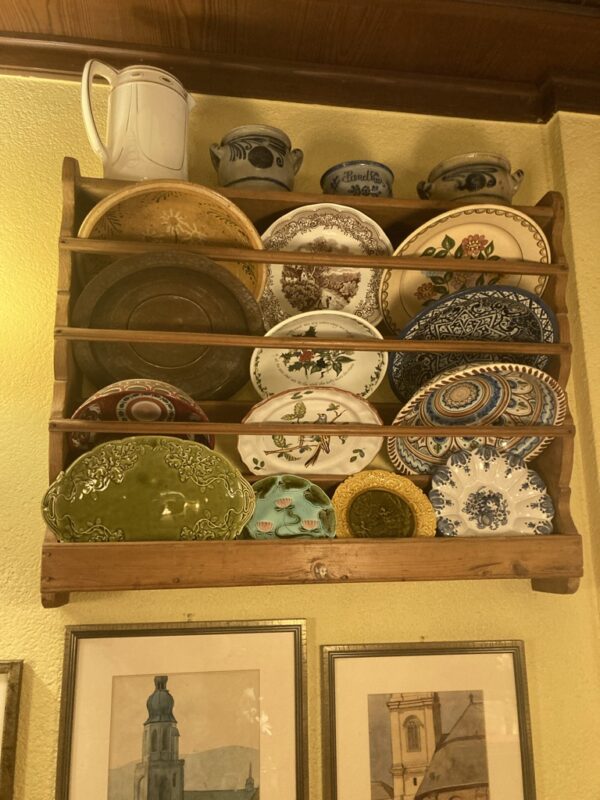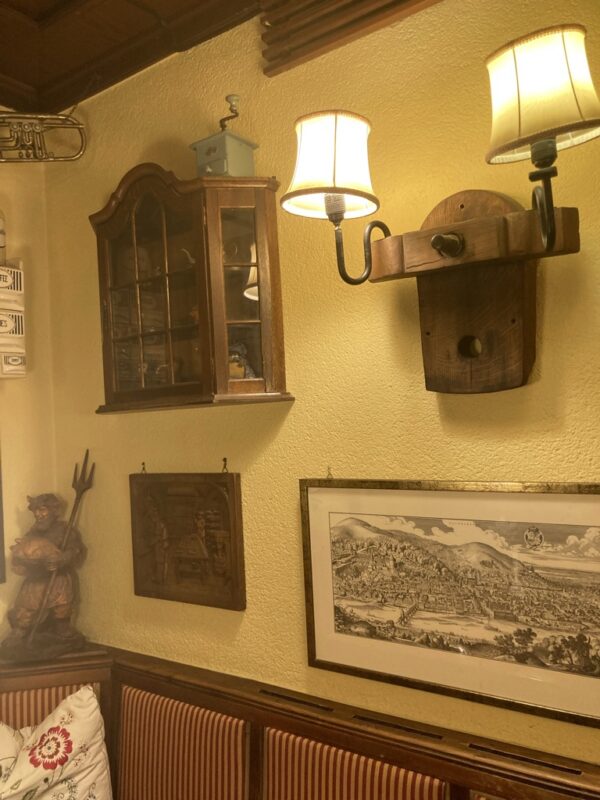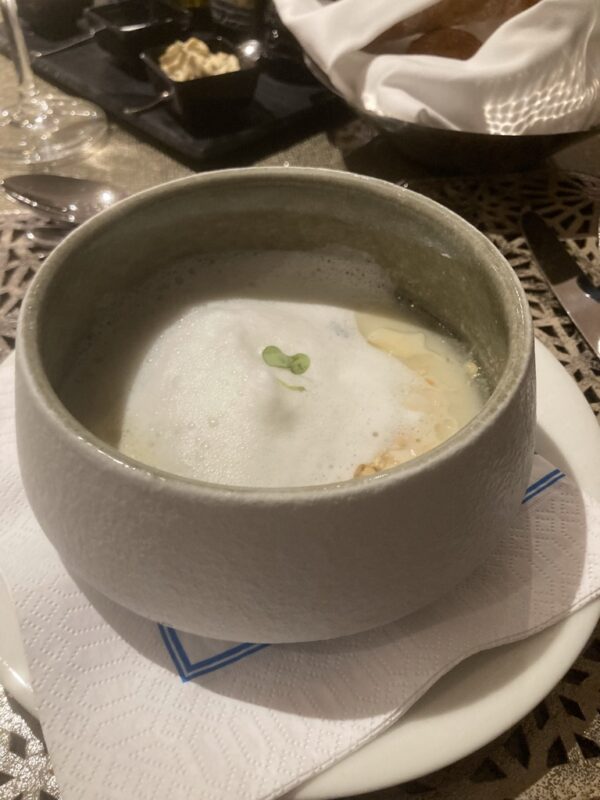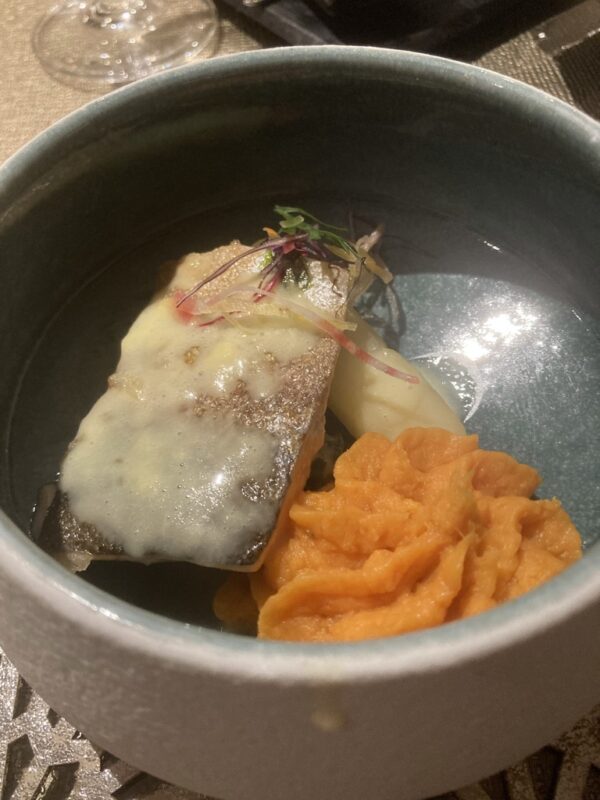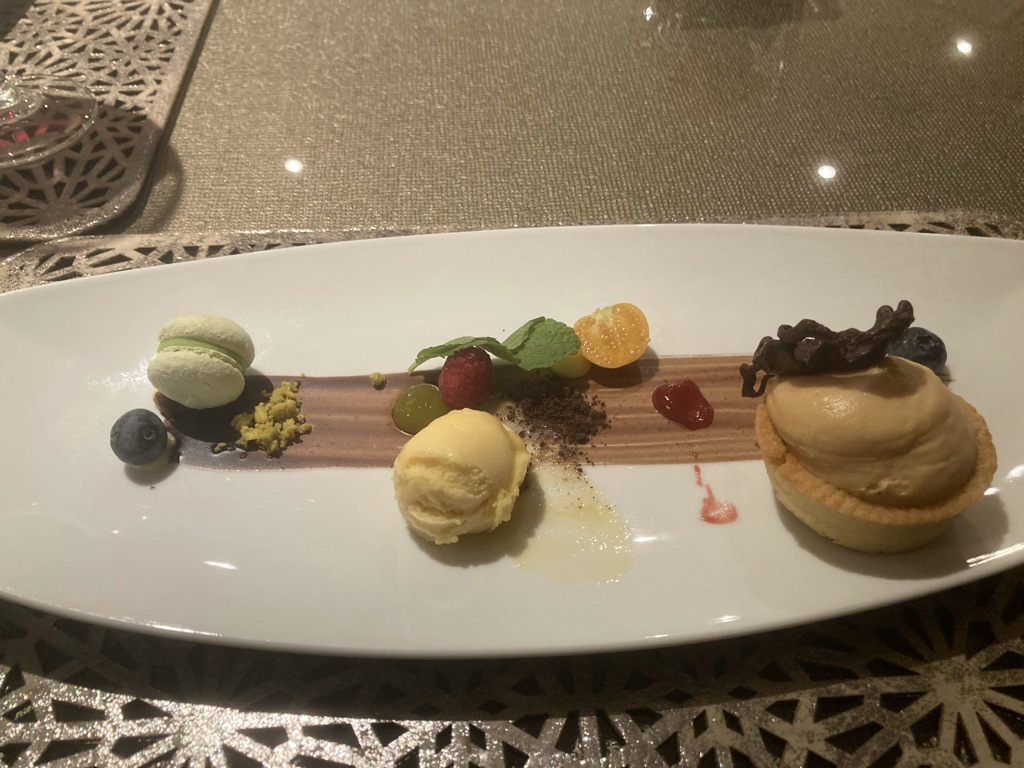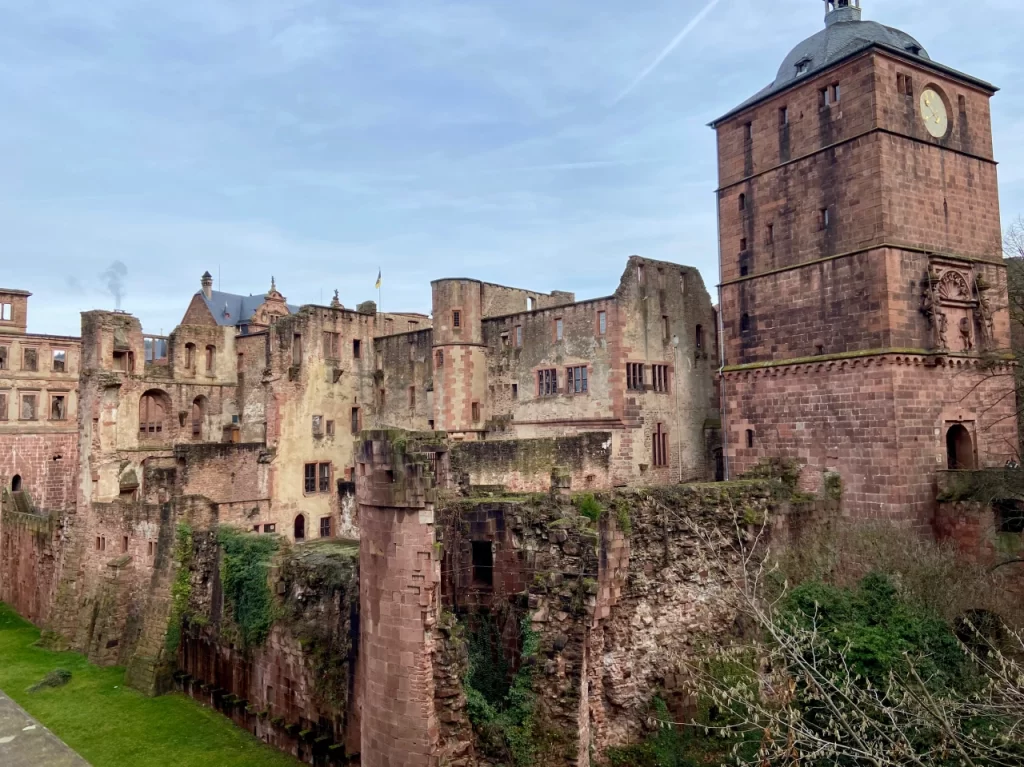
Memories of Heidelberg
This morning we arrived in Germany. We docked in Ludwighafen and took a half hour coach ride to the Historic city of Heidelberg. Once we were off the Autobahn, the bus climbed up and up a windy forested road. We parked after doing a forty point turn on a precarious mountainside road, and still had a bit of jaunt up a steep incline before we reached our first destination.
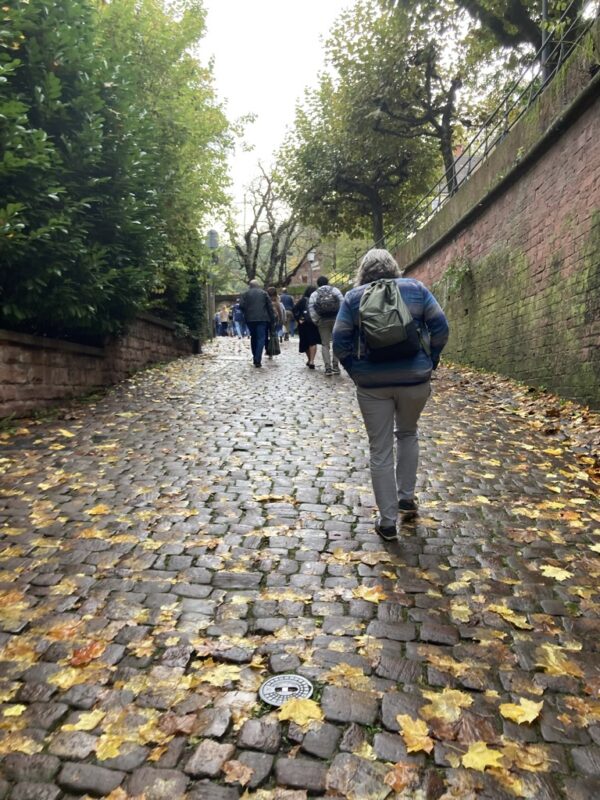
Heidelberg is home to oldest University in Germany Established in 1386. This gorgeous manor which is perched on the Königstuhl hillside overlooking the city is a Frat House. Yup.
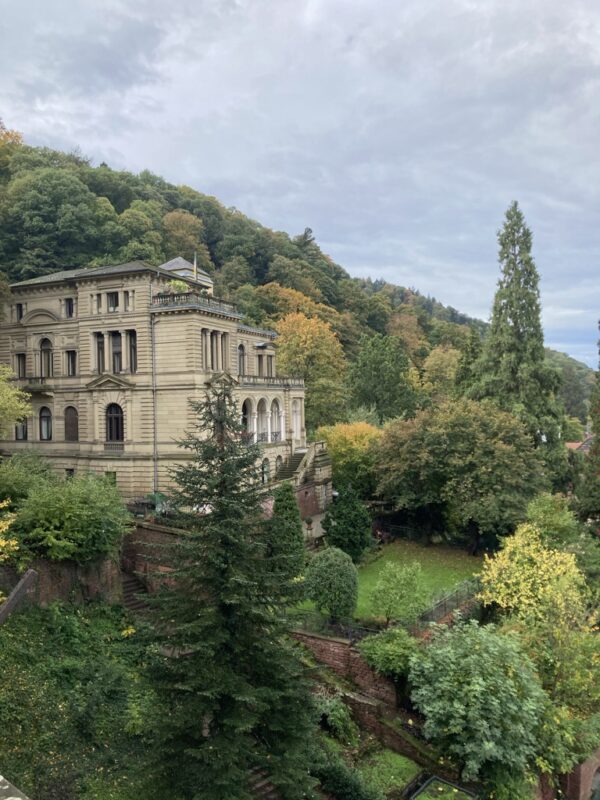

The main event for today was visiting Heidelberg Castle. As I’ve been learning about most places in Europe, it has a loooong history. It’s funny how being from such a young country informs your view of what is considered “old”. To me, the Hanover Mall is old. This castle has been around since the 1225.
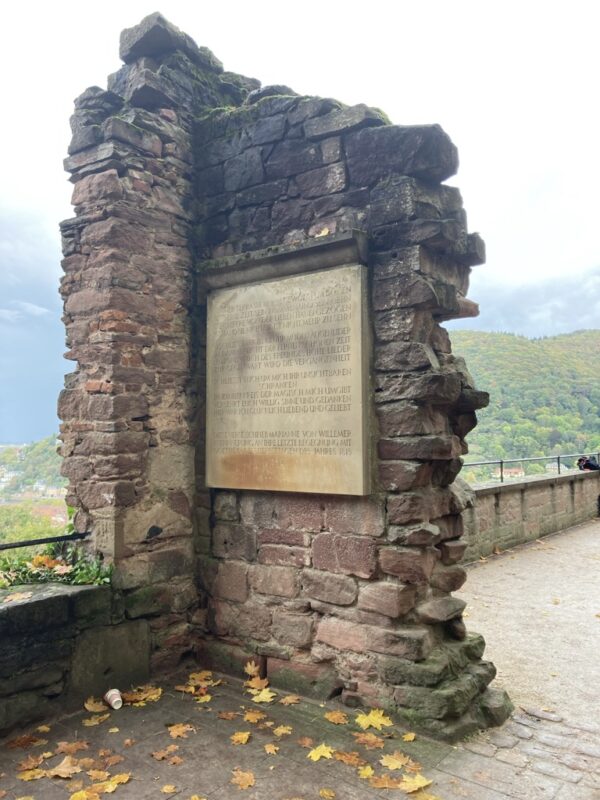
We were separated into groups of about ten and were each assigned to a period dressed guide who would lead us through the history of the castle. We each had listening devices so it felt as if this thirteenth century Dame was whispering sweet castle information right in my ear.
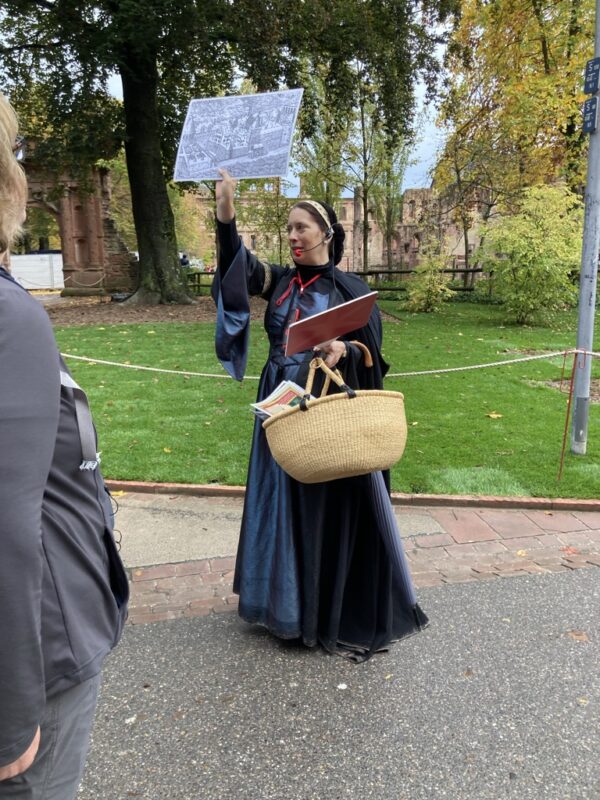
We started walking the grounds surrounding the outer fortifications. The castle itself has been conquered, destroyed and rebuilt several times throughout the centuries. However, Lightning seems to have been its harshest enemy. The upper castle itself was destroyed by a lightning strike in 1537 and rebuilt. Then, in 1764, the castle was once again hit by a terrible storm. As the story (which the lady purred into my ear) goes, a lightning strike ignited the entire cache of gunpowder and munitions that was used to defend the castle and the town of Heidelberg. This blew the front of the tower clear off. It still sits abandoned today.
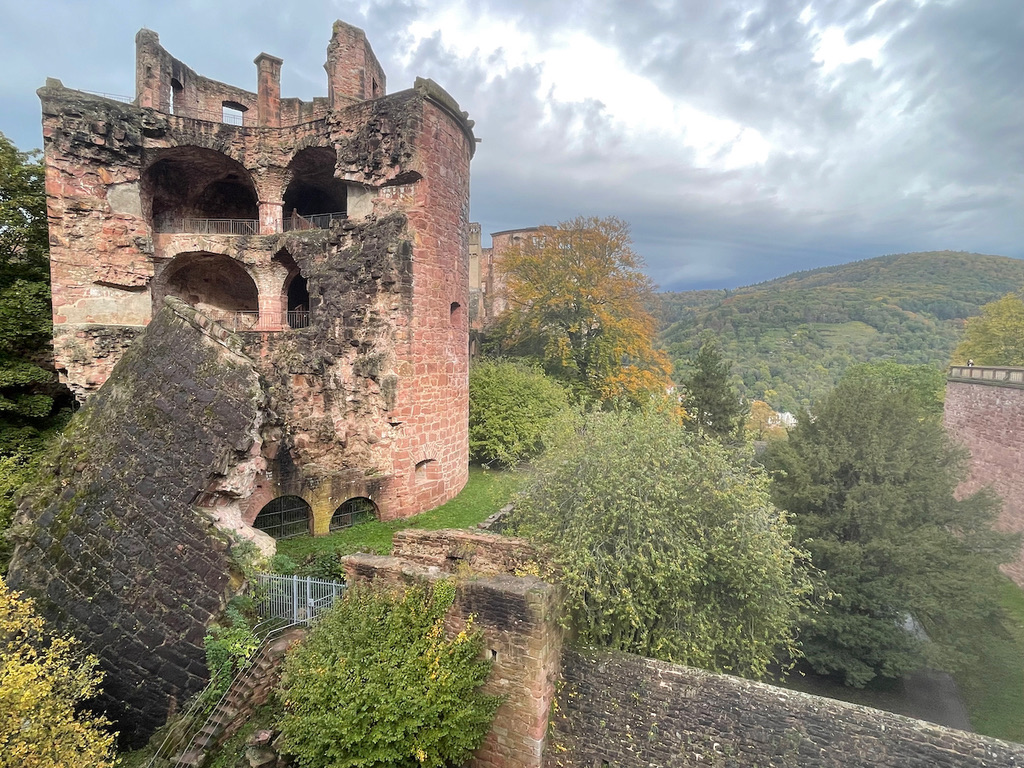
Our guide remarked that we didn’t look particularly infirm and perhaps we could take a longer stroll for better views of the Neckar Valley.
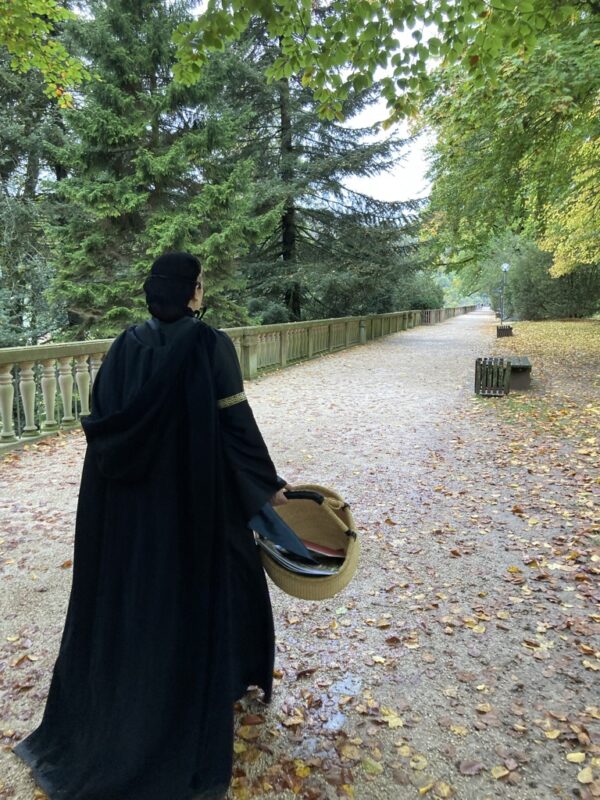
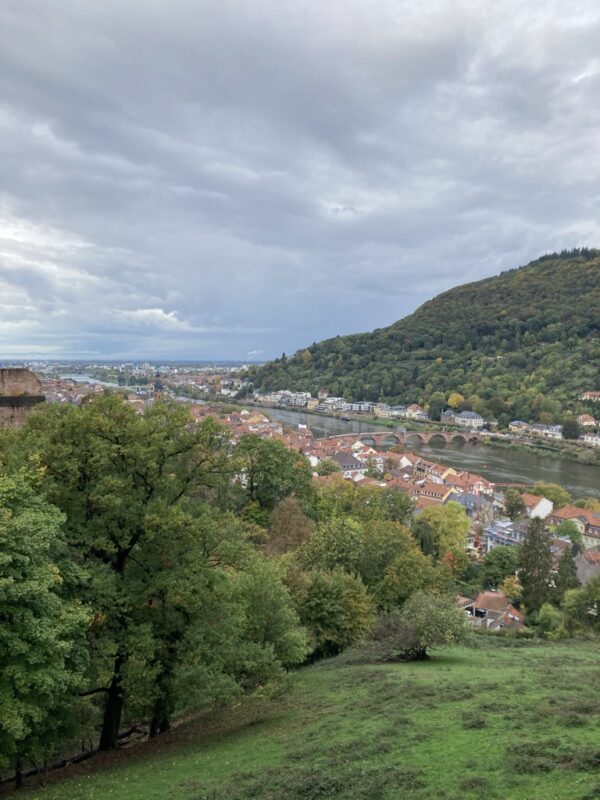
We journeyed back towards the castle and entered through the gate tower.
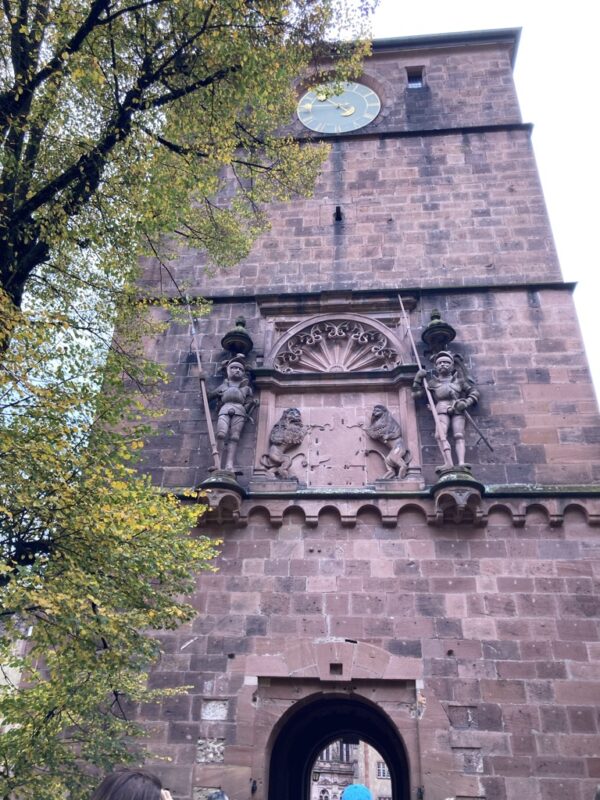
Over the Gate Tower there are two Medieval knights that were created in 1535. Between them are two Palatine Lions which once held a now missing coat of arms.
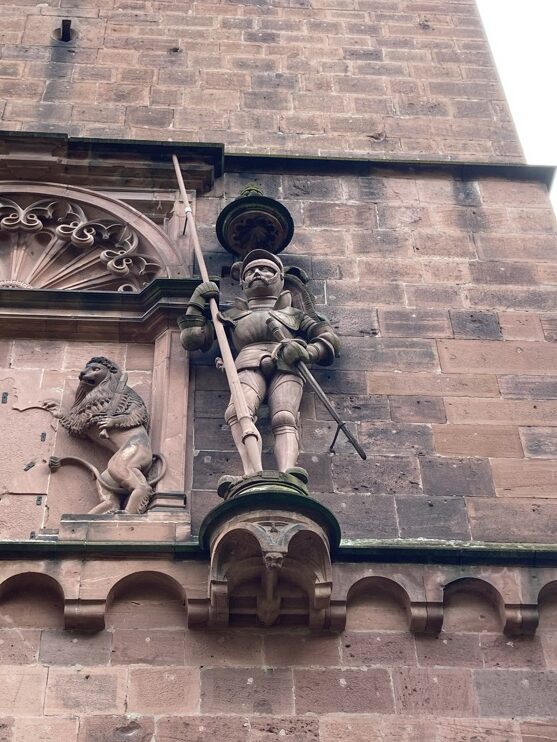
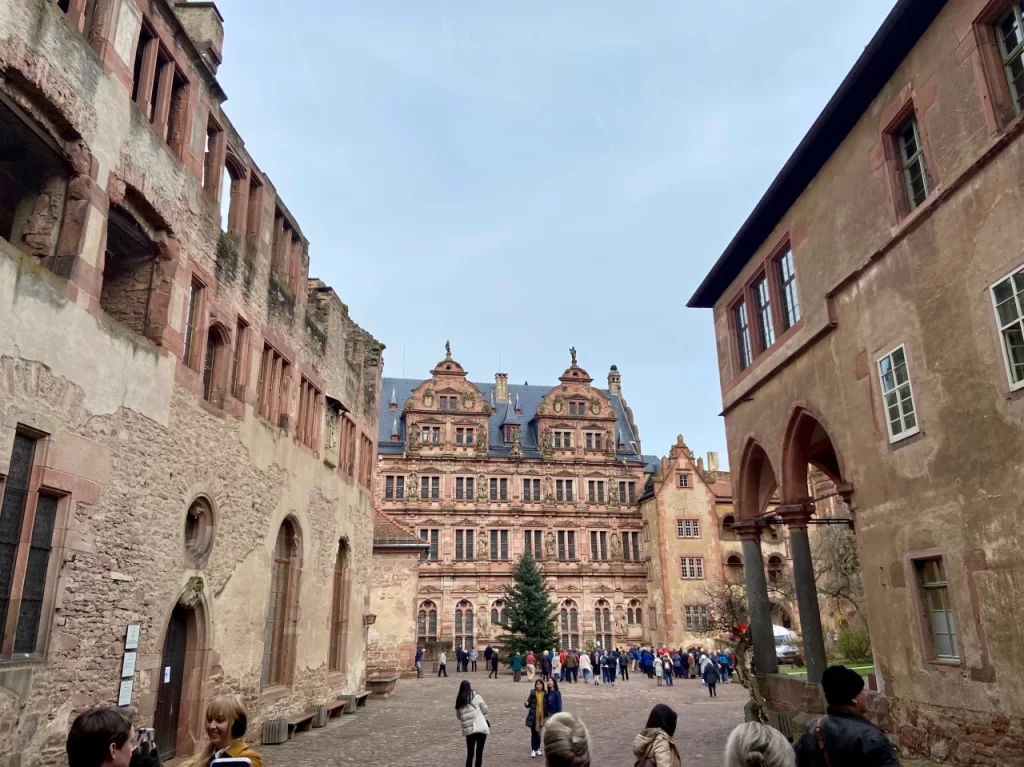
Once inside Heidelberg palace you can see the knitting together of different architectural eras through the centuries. Almost every prince-elector added a structure of a different style to the Castle.
Like with the ornately carved facade of the Strasbourg Cathedral, the statues here represent the History of Heidelberg.
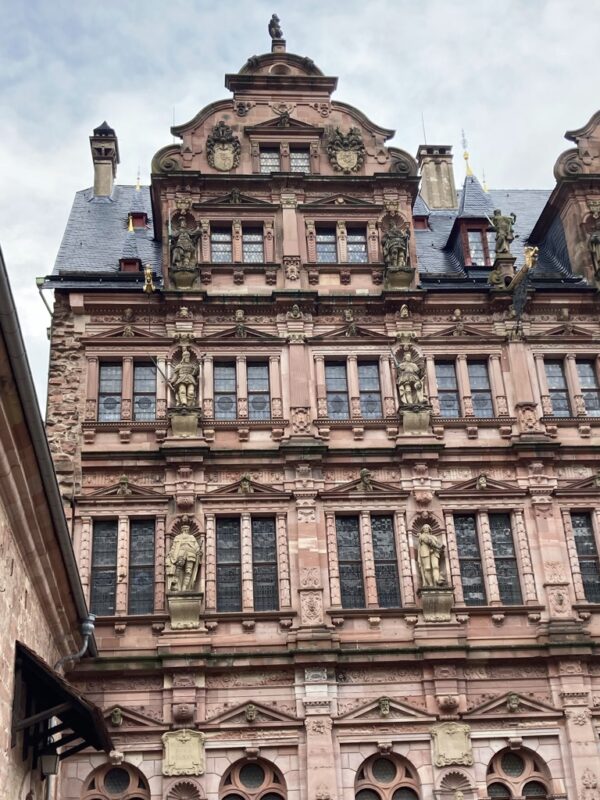
The top position on the facade is occupied by the “fathers” of the city including Charlemagne and Otto von Wittelsbach. In the second row, select representatives of the first family members to live along the Rhine like the founder of Heidelberg University. Emperors and kings descendant from the House of Wittelsbach are depicted in the third row.
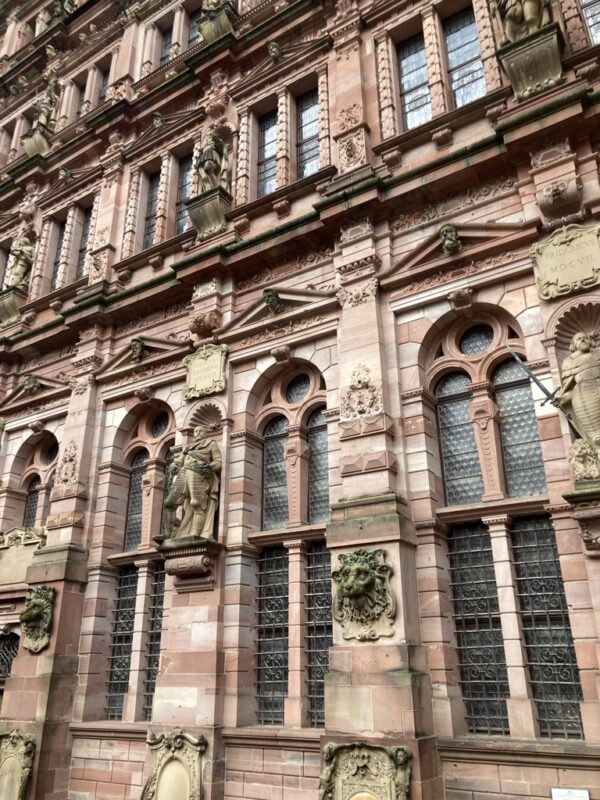
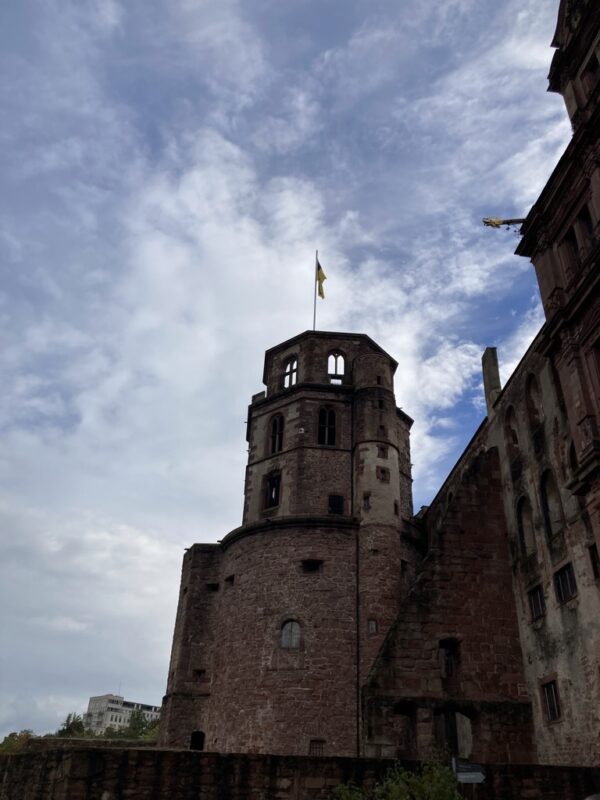
On the castle’s terrace one can see a supposed “footprint” which has a bit of a saucy fable attached to it. Supposedly, a lady-in-waiting was entertaining a knight in a third floor castle bedroom. Upon the discovery of the couple in flagranti, the knight is said to have leaped from the window in desperation. The iron shoe of his armor left a deep impression in the sandstone. One legend says that if your foot fits in the footprint, then you will one day return to Heidelberg. Another says that any man whose foot fits in this hole is a fantastic lover. You can choose your preferred lore.
If you survive your own leap to the terrace you will enjoy the most spectacular view over the city below. I captured a quick video whilst the church bells were ringing:
Before we departed the castle, we descended to the cellar in order to feast our eyes upon the world’s largest wine barrel, “The Heidelberg Tun”. This vat was built in 1751 to store the wine which growers of the region paid as taxes to the ruler. It’s capable of holding 219,000 liters of wine. I say “capable” because just ten years after the barrel was built, it began to decay and spring leaks. It hasn’t contained wine in it since.
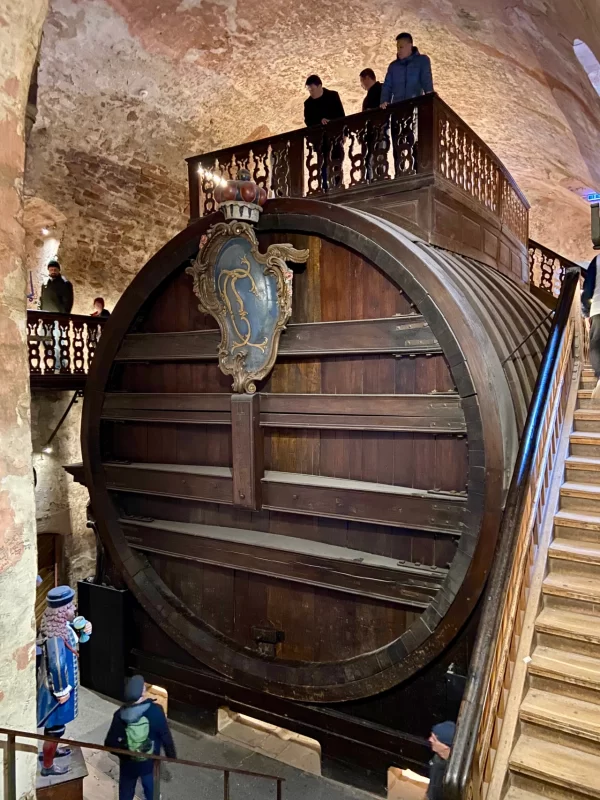
It was time to make our way down to the old Village. We had the choice to either ride the Funicular or trek down the 315 stairs. We had previously experienced one of these elevator/escalator contraptions when we visited Quebec a few years ago. I found it a bit unnerving. To the stairs!
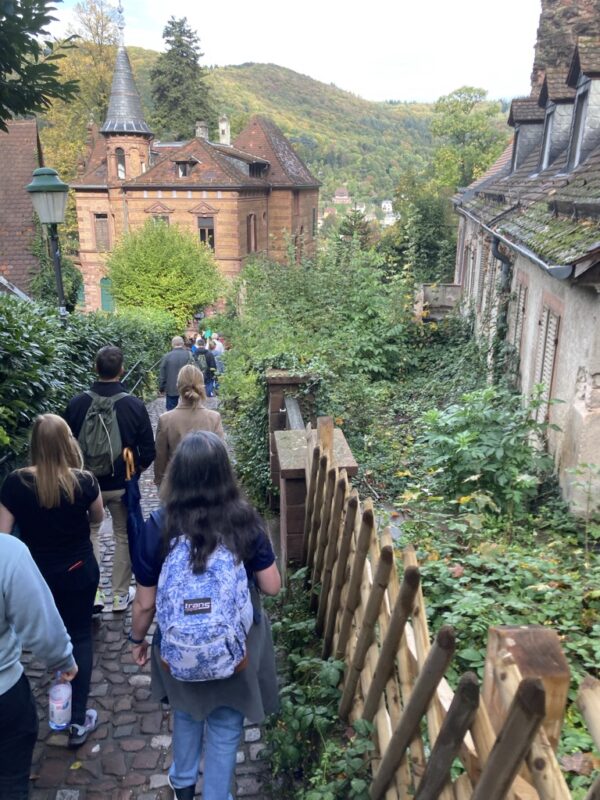
It was at this time that the clouds parted and the blues skies finally shone!!!
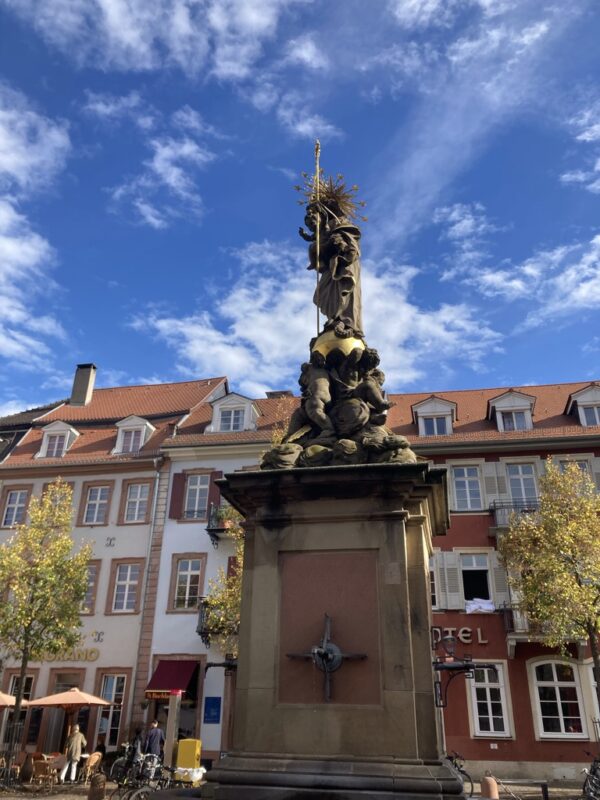
We gathered here at the Kornmarkt. This would be the spot where all the “Adventurers” would meet at the end of the day.
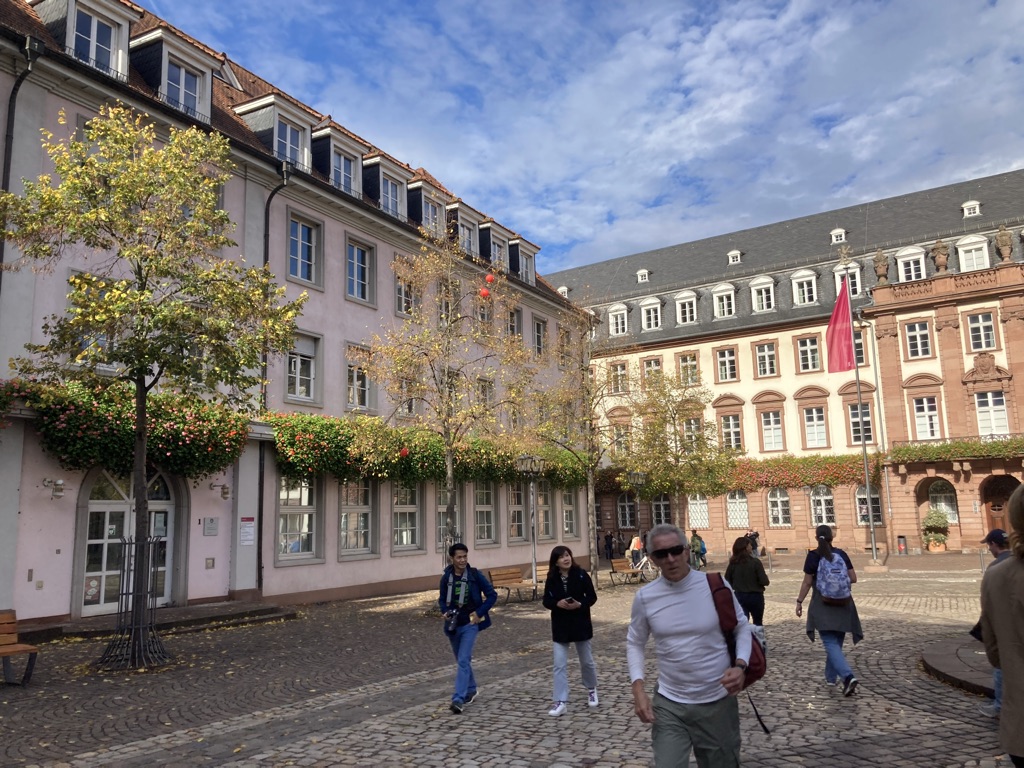
Our guide cemented this location in our minds by telling us about the Corn Kid. I had missed this internet sensation previously. If you did as well, please click the link so your life will be complete.
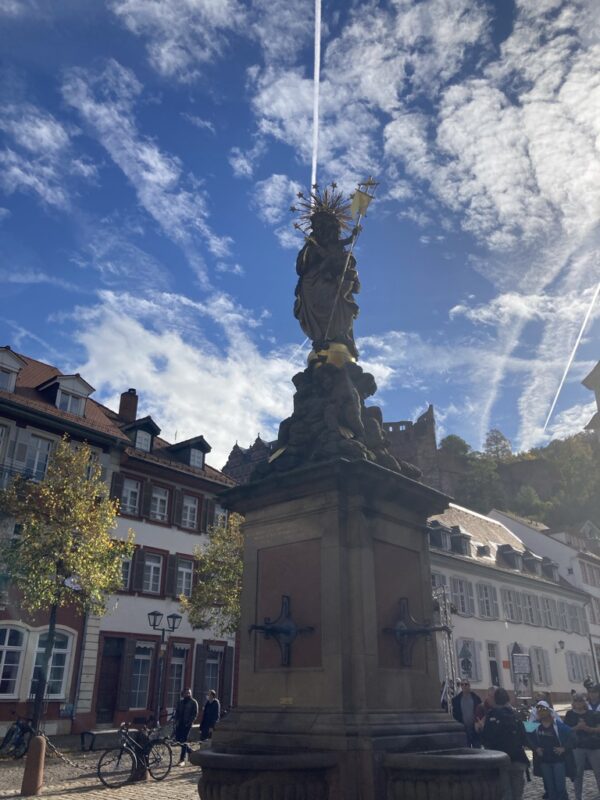
Once you pass through the Kornmarkt it opens up to a larger Marketplace called Rathausplatz where you’ll find the Town Hall for which it’s named, as well as the 15th century Heiliggeistkirche (Church of the Holy Spirit) whose bells we heard ringing out on the hillside earlier. Did you listen? You can go back if you didn’t. I’ll wait.
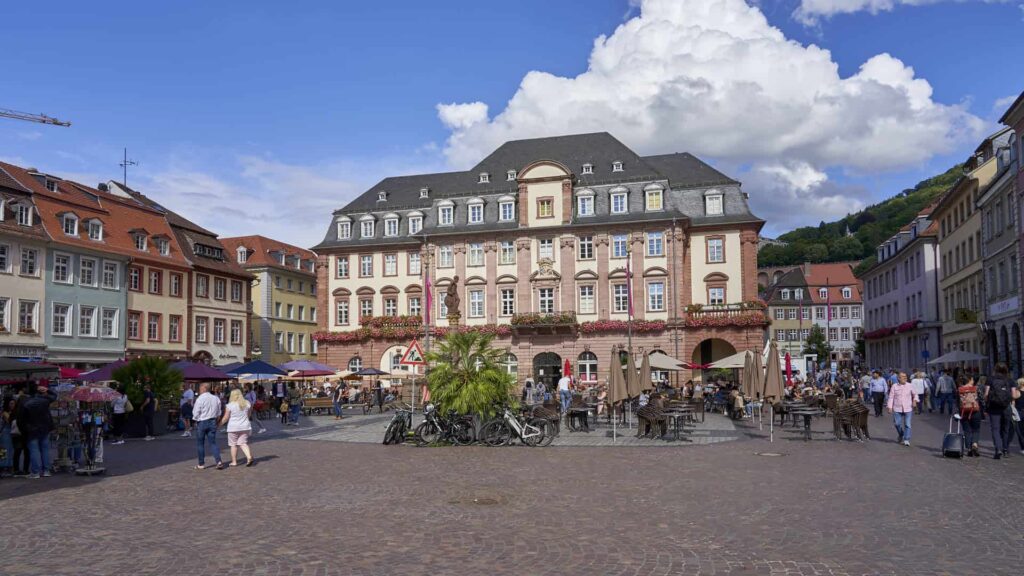
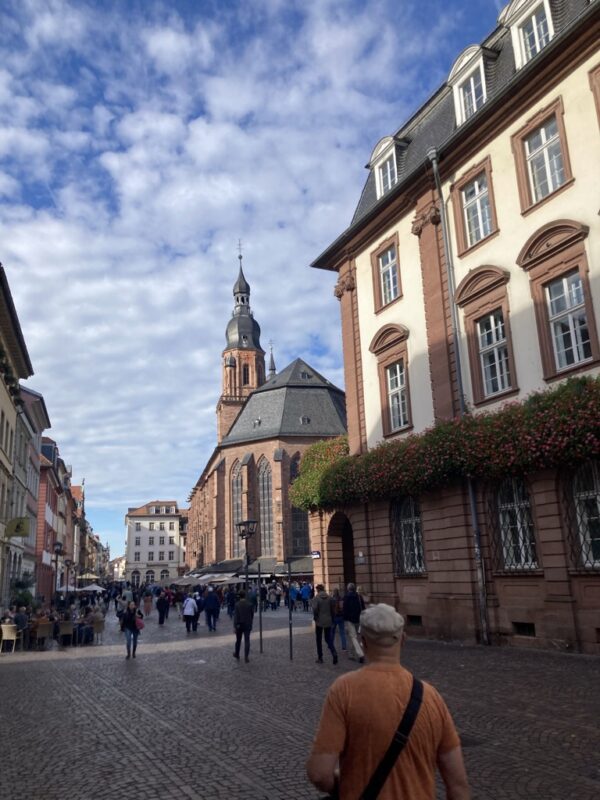
Before we explored too much more we decided to plop down at one of the many outdoor cafés for some refreshment. Every place we stopped on this trip had a vast amount of non-alcoholic beers on the menu. Low and no-alcohol drinks are standard fare in Europe.
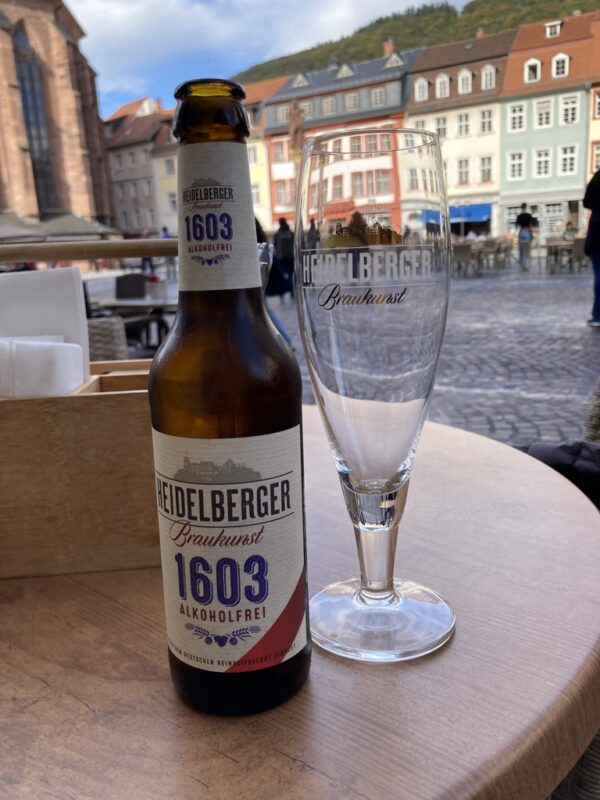
Now that we were rested and watered we went about exploring the Old Town of Heidelberg.
The florals were still in their glory in October.
The Altstadt (Old Town) is combination of old and new buildings. Most have a restaurant, a café or a shop on the ground floor and either a hotel or apartments above. Narrow streets branch off Hauptstraße, the main road where most of the shopping is centered.
We ducked down one of the narrow streets to the Neckar River where you’ll find the uninspiredly named “Old Bridge”. It’s also a misnomer because it is the ninth bridge erected in the same spot. The first eight bridges were made of wood and were consecutively destroyed by various fire, floods, and storms over the centuries.
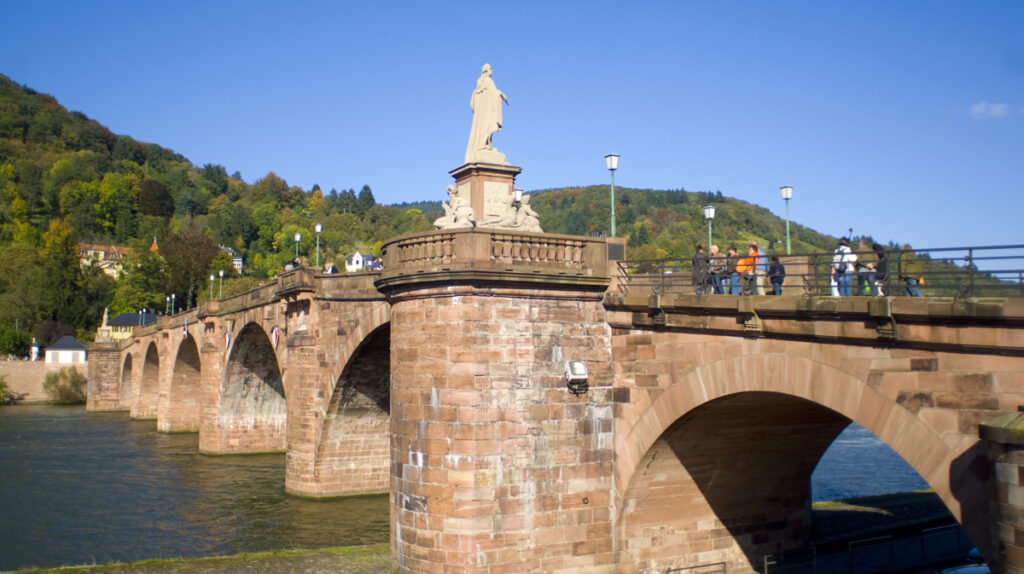
At the bridge you’re greeted by a Bronze Monkey.
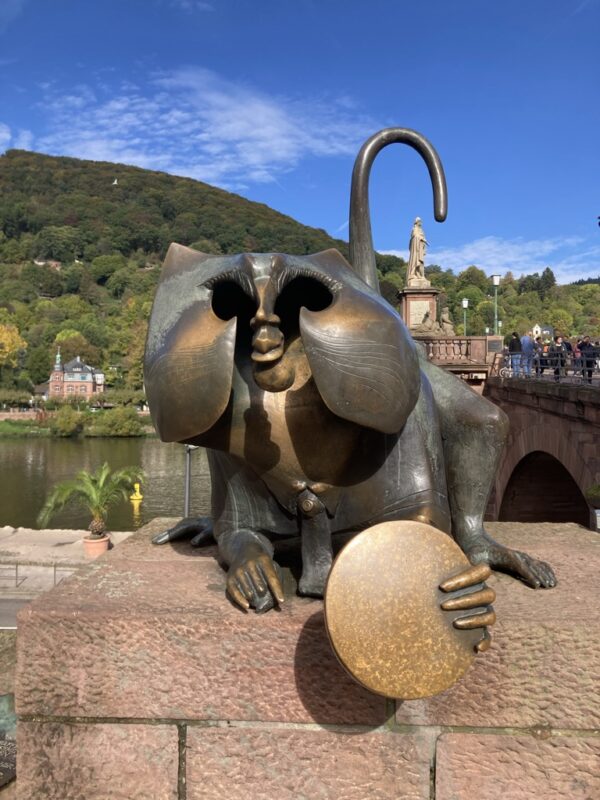
This piece seems a bit out of place compared to all the other renaissance statuary, but the bridge has featured a monkey at this spot as far back as the 15th century. This current statue has only been around since 1979. It’s meant remind those who crossed it from either side to look over their shoulders at where they’ve come from.
On the plaque below is a poem written about the monkey by the Baroque writer Martin Zeiler in 1632.
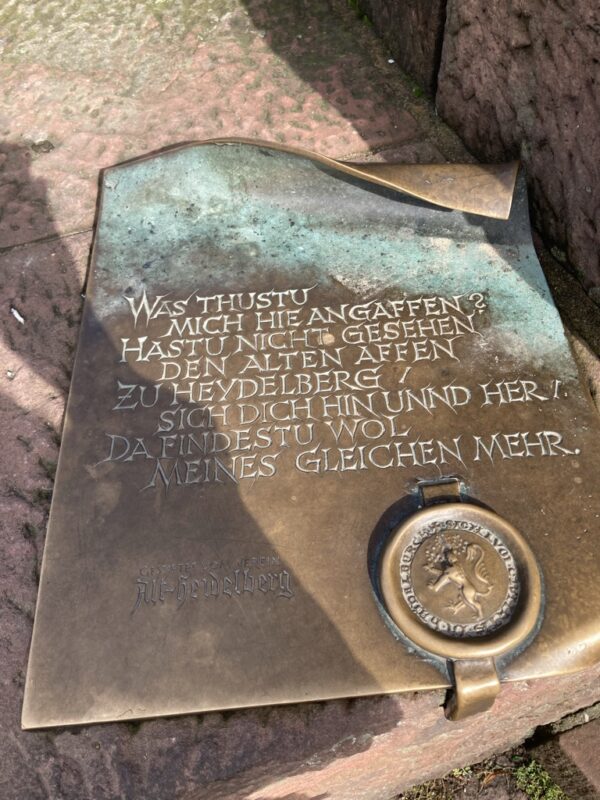
The head is hollow so visitors are encouraged take selfies while using it as a mask.
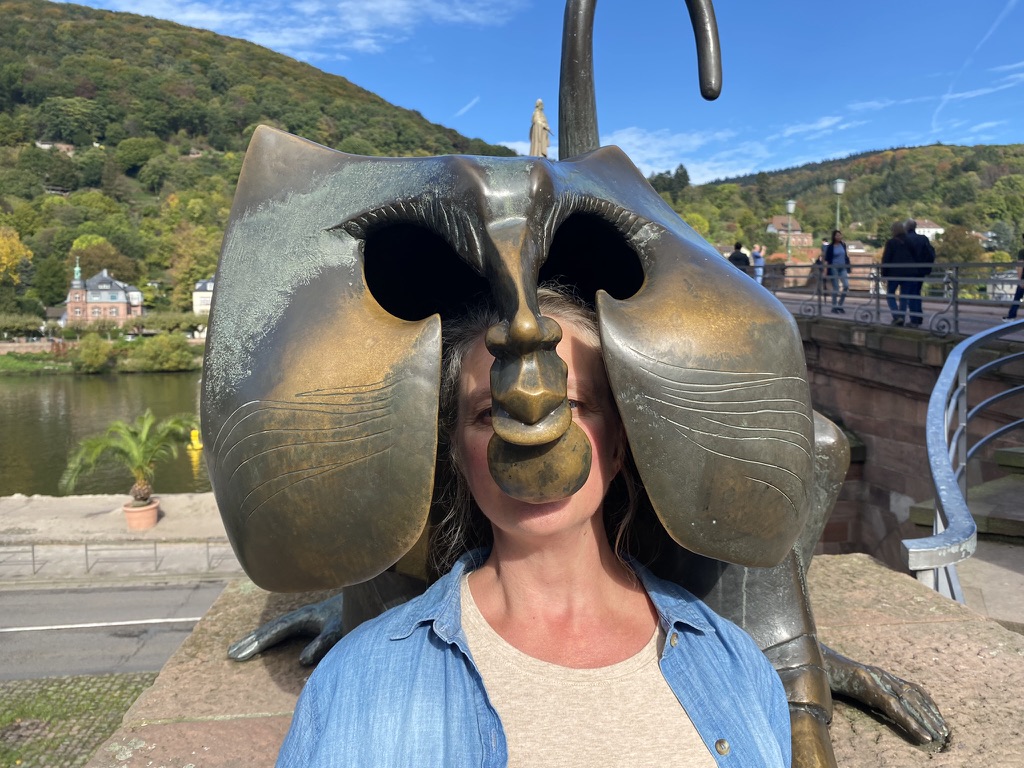
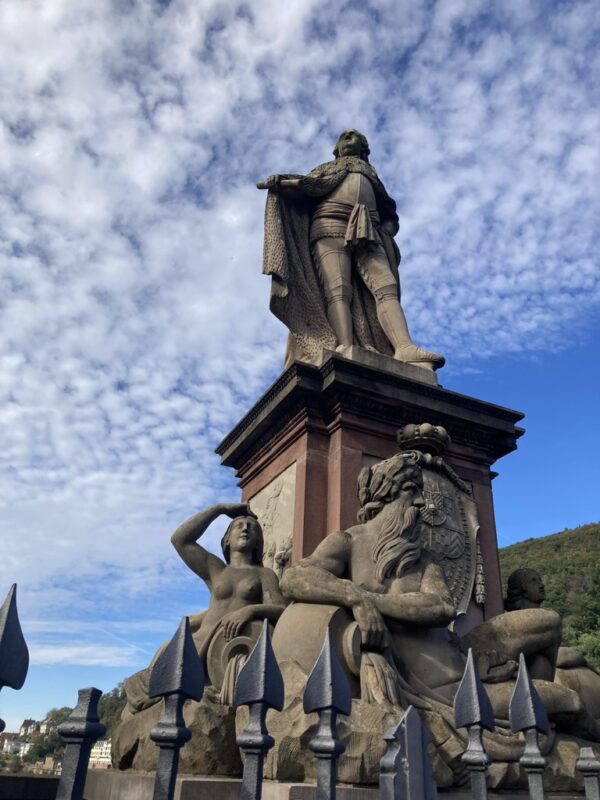
Now that we are standing across the Neckar River we can get a full view of the Castle.
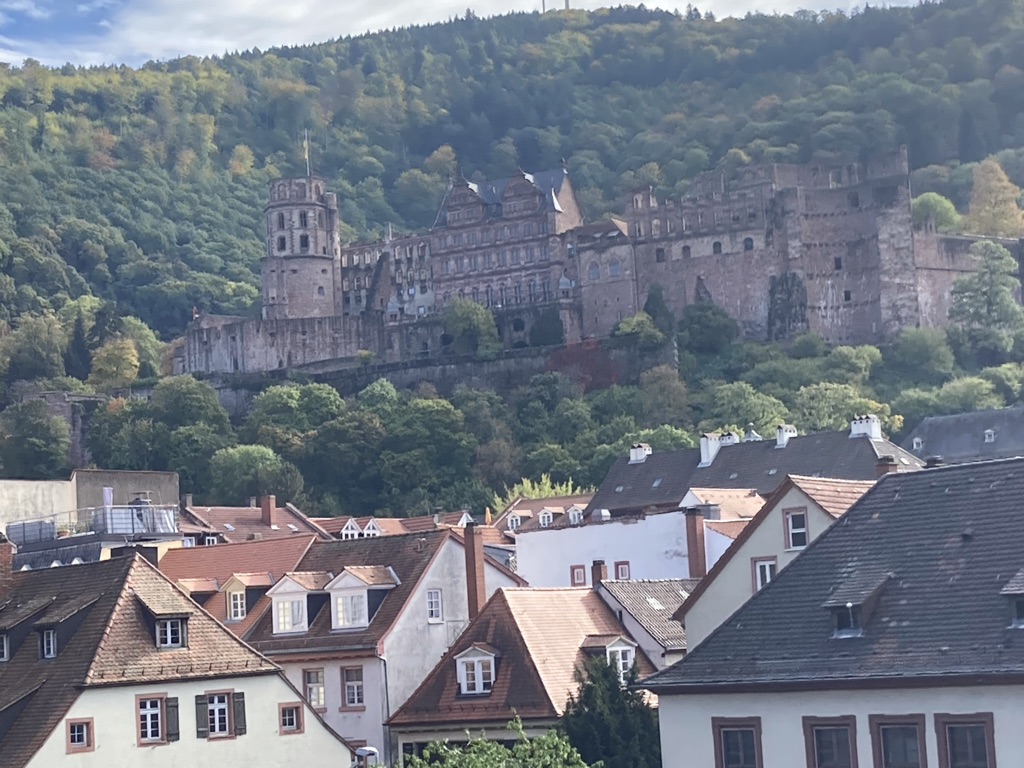
This medieval bridge Gate survived all the floods and fires. In one tower there are quarters for the guards, the other has a jail to detain “suspicious persons”.
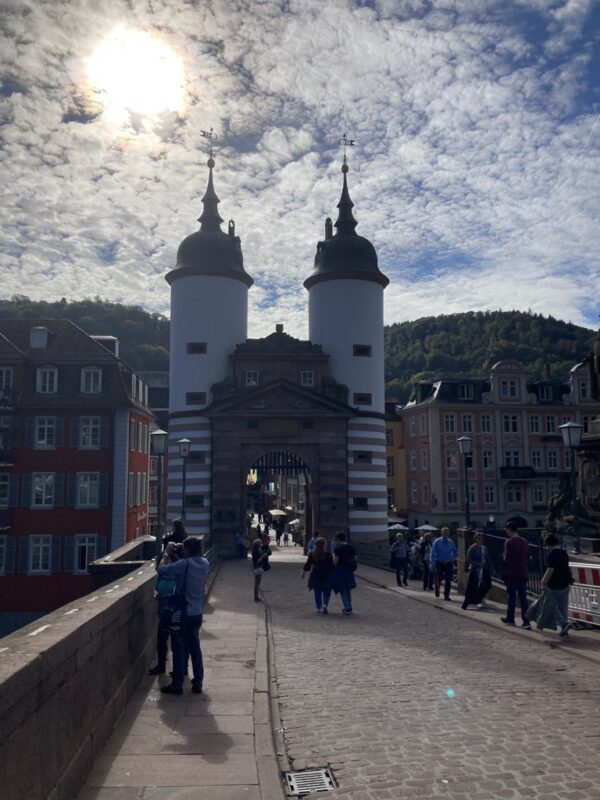
It was getting on time to procure some lunch. We found the perfect spot down a little alleyway. This was an adorable cafe at the Hotel Hackteufel.
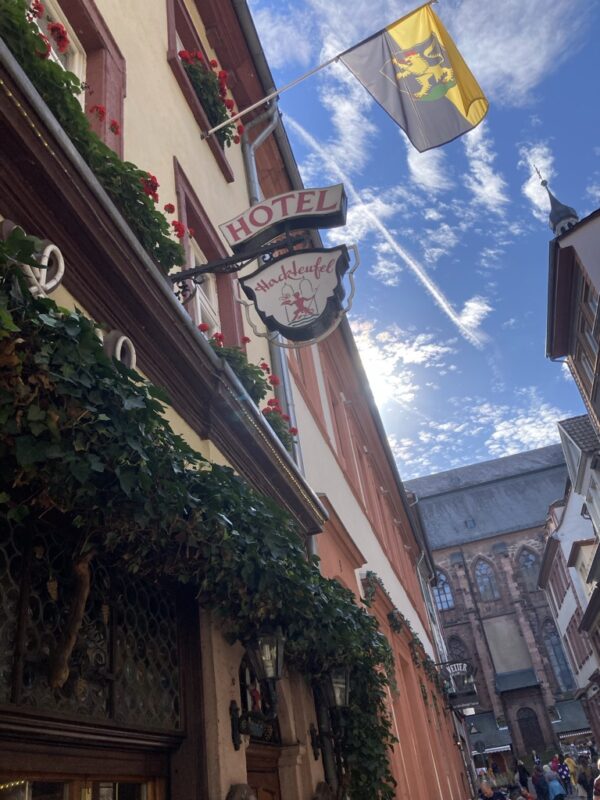
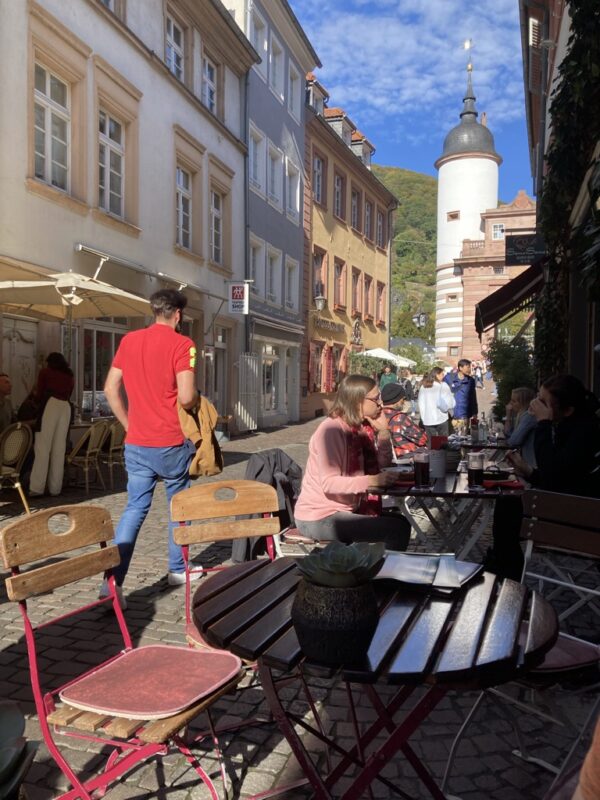
We got a beer and a pretzel which came with a pile of radishes and some yummy cream cheese called Obazda. The main dish was a pork schnitzel with most scrumptious potato salad. Jeff proclaimed it was the best bite of the trip.
We spent a couple more hours wandering around and taking it all in before stopping for a sweet at a lovely shop, La Macaronnerie Heidelberg.
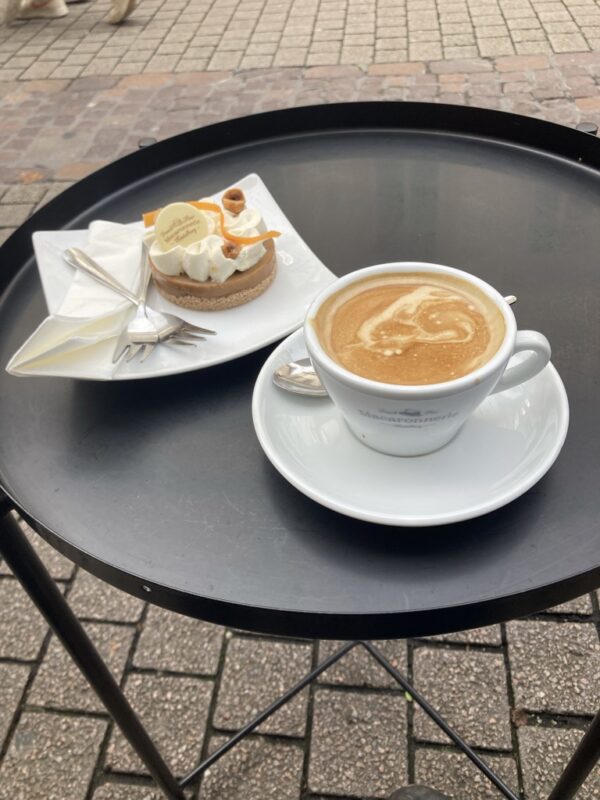
We headed back to our floating hotel and surely had a loooong nap. Tonight we were scheduled to have a special dinner in the captain’s dining room. This is something every guest has the opportunity to do, you just need to sign up ahead of time.
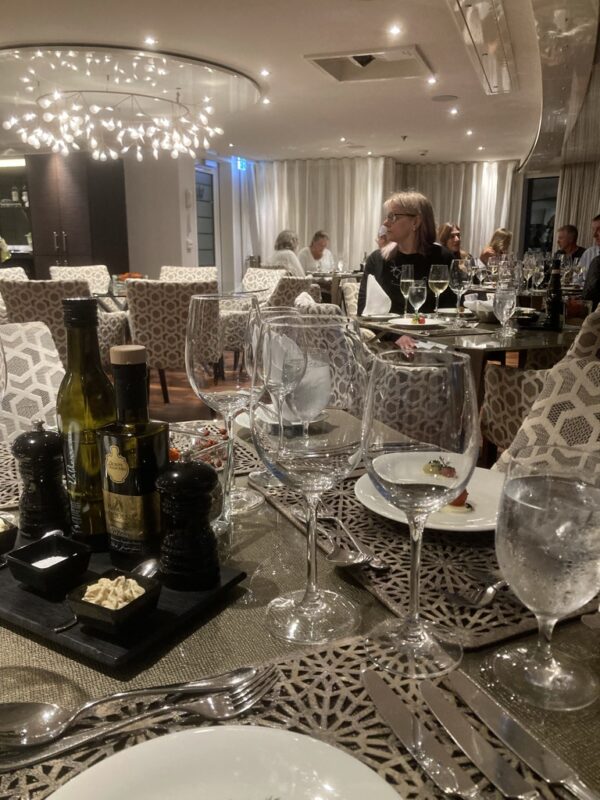
The food in the main dining room had been so brilliant we could not imagine how it could be even better. Well…. it wasn’t. I won’t go on and on about it, but it was just perplexing. Not only did the food suffer in comparison to the main dining room, but dishes were obviously plated hours before we even arrived. The desserts were already lined up on a table as we walked through. Then when our first course arrived it was kind of shocking.
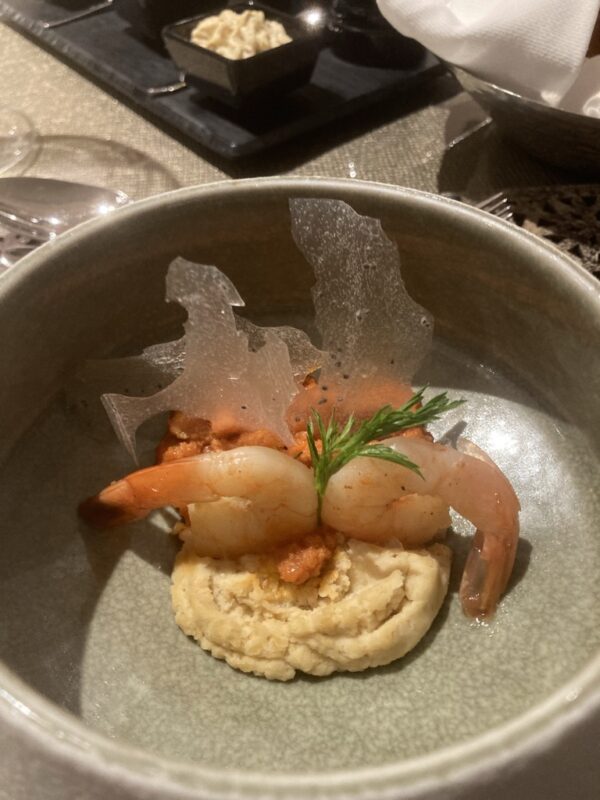
The rest of the courses were just humdrum. I guess it just made us appreciate the finesse of the chefs that have been delighting us each evening.
On bus on the way to Heidelberg, our guide shared (implanted in our brains) a song by Peggy March. You may remember her big hit “I Will Follow Him…”. Well, she had another ditty called “Memories of Heidelberg”. You can guess what it’s about. It’s all in German except the titular line but it’s enough to get entrenched in your brain forever. Listen if you dare!
We’ll be visiting another charming hamlet in Germany in the next installment.
Until then…
🎶 ♫ ♪ ..Memories of Heidelberg are memories of you…🎶 ♫♪


